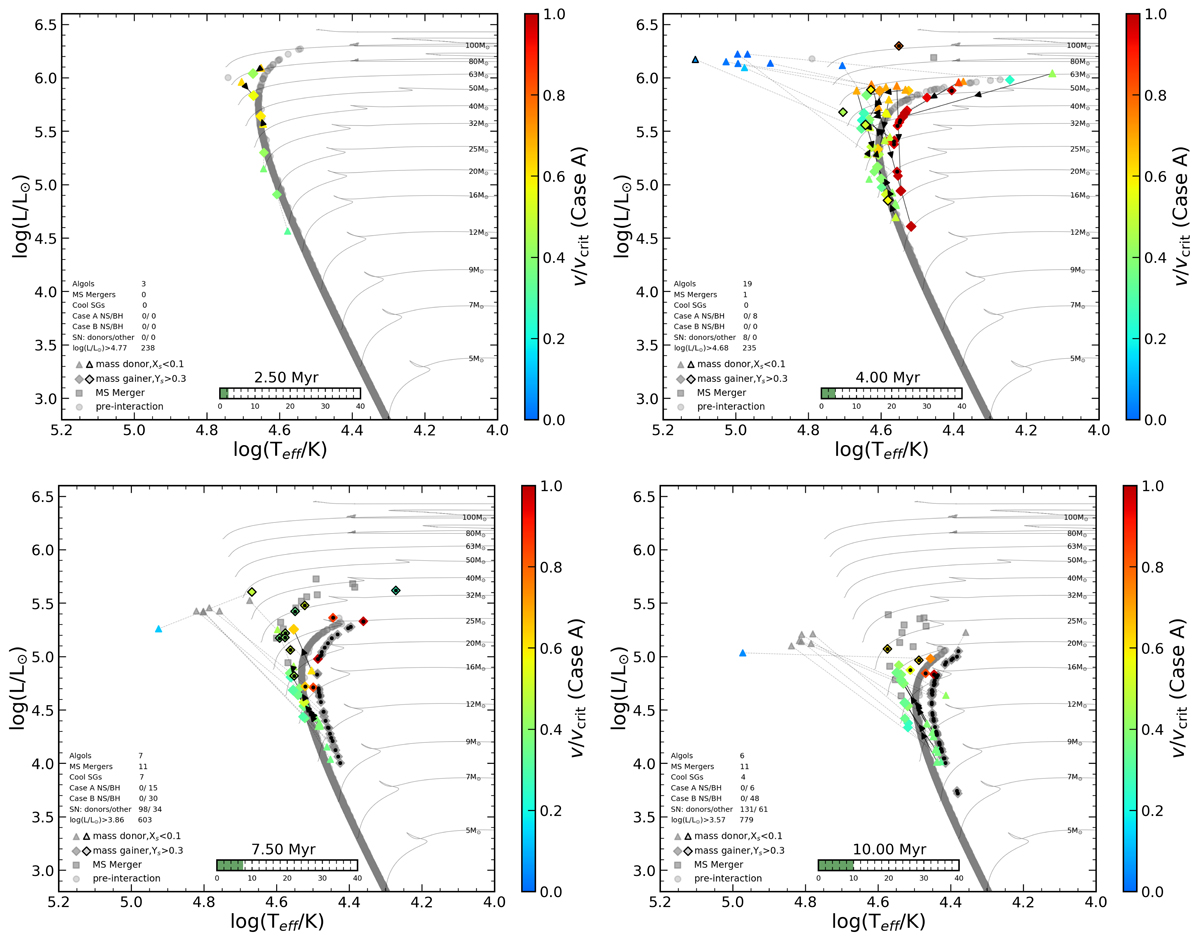Fig. 3.

Download original image
Four snapshots of the animation showing positions of both components of detailed massive binary models in the HR diagram, considering a coeval population following a Salpeter initial mass function and flat initial distributions of mass ratios and logarithms of the initial orbital periods. The snapshots correspond to an age of 2.5 Myr (top left panel), 4 Myr (top right panel), 7.5 Myr (bottom left panel), and 10 Myr (bottom right panel). Translucent grey circles indicate components of pre-interaction binaries, grey squares indicate Case A merger products, and triangles and diamonds indicate mass donors and accretors after the onset of mass transfer, respectively. Components of Case A binaries after the onset of mass transfer are shown in colour, denoting the fraction of critical rotation rotation (v/vcrit). The two components of semi-detached binaries are connected by solid black lines with an arrow indicating the direction of mass transfer. The two components of binaries that have interacted in the past are connected with grey dotted lines. A black frame around a mass donor symbol (triangle) indicates a surface hydrogen mass fraction below 0.1, and a black frame around the symbol for a mass accretor (diamond) indicates a surface helium mass fraction above 0.3. The current age of the population is displayed in the centre bottom with a time bar that fills up as the animation moves forward in time. The table above the legend indicates (from the top) the current number of (i) Algol binaries, i.e. models in the slow Case A mass transfer phase; (ii) core hydrogen burning main-sequence merger products and (iii) cool red supergiants (log Teff < 3.7); (iv) and (v) Case A or Case-B main-sequence mass gainers, respectively, with a neutron star (white dot on symbol) or black hole (black dot on symbol) companion; (vi) core-collapse events that occurred up to the current age; and (vii) pre-interaction binaries brighter than the indicated luminosity threshold, which is 1.5 dex below the luminosity of the brightest hydrogen-burning single star at the current age.
Current usage metrics show cumulative count of Article Views (full-text article views including HTML views, PDF and ePub downloads, according to the available data) and Abstracts Views on Vision4Press platform.
Data correspond to usage on the plateform after 2015. The current usage metrics is available 48-96 hours after online publication and is updated daily on week days.
Initial download of the metrics may take a while.


